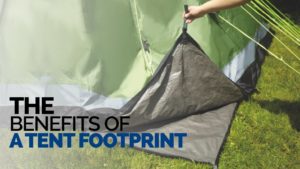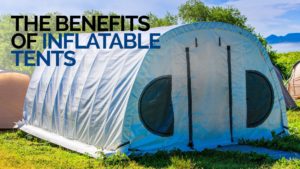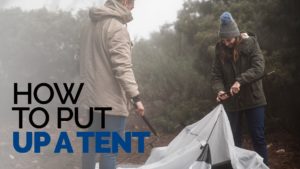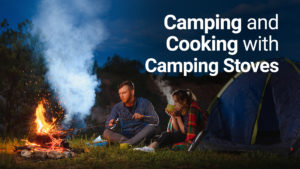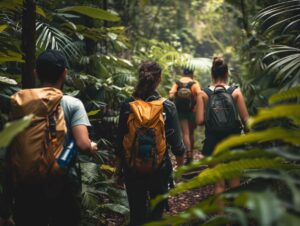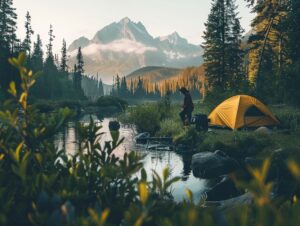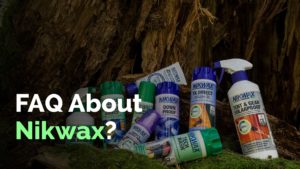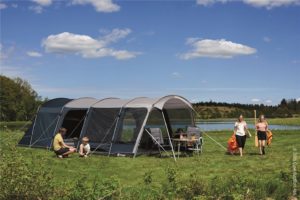
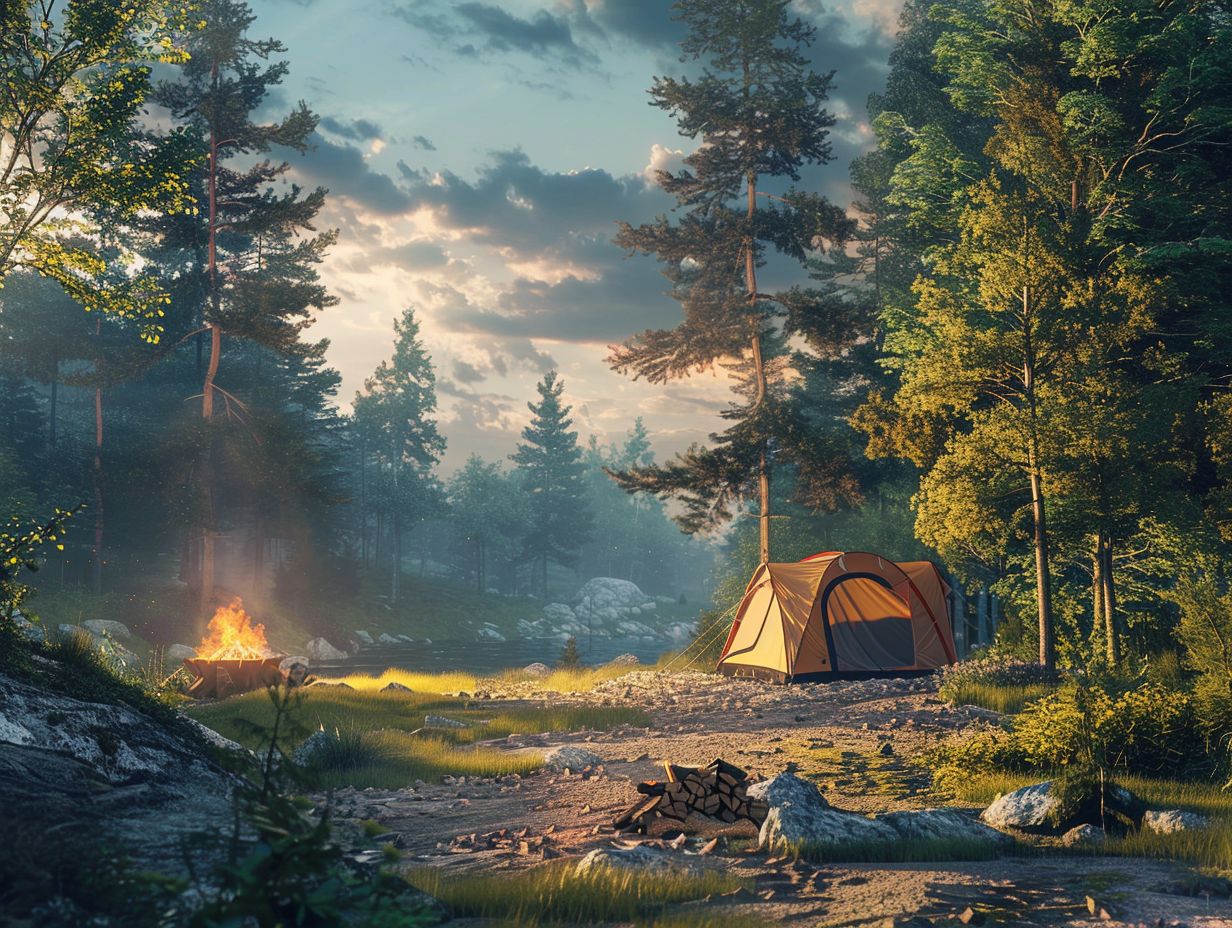
Vaibhav
- Categories: Advice
Are you looking for a budget-friendly and less crowded camping experience surrounded by scenic views and opportunities for outdoor activities?
Consider national forests! This guide explores the benefits of camping in national forests, how to plan your trip, what to pack, rules and regulations to follow, and popular national forests for camping.
Prepare to immerse yourself in nature and discover the beauty of camping in these stunning locations.
Key Takeaways:

- Discover stunning views and enjoy affordable camping fees by opting for a camping trip in national forests.
- Proper planning is key to an enjoyable trip – research, check availability and reservations, obtain permits, and plan your route and transportation beforehand.
- Pack essential camping gear, food and water, clothing, and first aid kit while adhering to rules and regulations such as Leave No Trace principles and wildlife safety guidelines.
Why Should You Go Camping in National Forests?
Camping within national forests presents a distinctive and enriching opportunity to establish a connection with nature and appreciate the tranquil beauty inherent in these extensive wilderness areas. Administered by the USDA Forest Service, these regions offer a varied array of landscapes and ecosystems suitable for all categories of campers, thereby guaranteeing a memorable camping venture.
1. Scenic Views
One of the primary advantages of camping in national forests is the opportunity to access stunning scenic vistas that showcase the natural beauty and varied camping locations available.
Campers have the chance to wake up to awe-inspiring mountain ranges, such as the majestic Rockies in Colorado or the picturesque Sierra Nevada in California. The presence of glistening rivers, such as the Snake River in Idaho or the serene Nantahala River in North Carolina, provides a peaceful backdrop to the camping experience.
In addition, the gentle winds rustling through the tall trees in forests like the captivating Redwood National and State Parks in California contribute to creating a magical atmosphere.
These scenic views not only offer picturesque moments but also establish a profound connection between campers and the wilderness, enabling them to relax and revitalise amidst the grandeur of nature.
2. Affordable Camping Fees
National forests provide cost-effective camping fees, offering numerous opportunities for free camping on Bureau of Land Management (BLM) land and dispersed camping sites, ensuring accessibility for a wide range of individuals.
When engaging in camping activities on Bureau of Land Management (BLM) land, individuals have the chance to utilise the free camping zones established within these public territories.
Dispersed camping, a favoured choice among those seeking a more solitary experience, permits campers to establish their campsites or park their RVs in primitive areas lacking designated camping facilities. This form of camping typically necessitates individuals to be self-sufficient as no amenities are available, highlighting a return-to-nature approach.
By examining various fee structures and camping alternatives, outdoor enthusiasts can identify the most suitable option aligning with their financial means and preferred camping style.
3. Less Crowded Campgrounds
National forests frequently feature less crowded campsites in comparison to popular developed campsites, offering a tranquil and more secluded camping environment. This reduced level of congestion in national forest campsites presents campers with the opportunity to enjoy a heightened sense of privacy amidst the natural splendour.
With a diminished presence of individuals, campers can fully engage in the tranquillity of the surroundings and establish a deeper connection with nature. The peaceful ambience prevalent in these less crowded camping sites also fosters a quieter environment, enabling visitors to truly relax and enjoy the serenity that the wilderness provides.
This contrast to the busier developed campsites enhances the overall camping experience for those seeking a more peaceful retreat.
4. Opportunities for Outdoor Activities
Camping within national forests presents numerous opportunities for outdoor pursuits that enrich the camping experience and enable individuals to fully engage with nature.
Exploring the majestic trails within these national forests through hiking provides the chance to traverse diverse landscapes and encounter awe-inspiring viewpoints throughout the journey. Additionally, fishing in the clear streams and lakes offers a combination of relaxation and excitement as individuals attempt to capture various species of fish.
Observing wildlife in their natural habitat offers a unique opportunity to witness indigenous flora and fauna, from vibrant birds gracefully soaring overhead to elusive deer peacefully grazing in meadows. Participating in these activities not only enhances the thrill of the camping excursion but also fosters a deeper connection with the natural environment.
How to Plan Your Trip to a National Forest?
When arranging a camping excursion to a national forest, it is imperative to meticulously assess a range of factors including campsite availability, required licences, and optimal camping pitches. The use of tools such as The Dyrt PRO, along with expert guidance from the USDA Forest Service, can significantly improve the efficiency of the planning process.
1. Research the National Forests in Your Area
Commence the planning process by conducting thorough research on the national forests within your vicinity to identify optimal camping locations that align with your preferences and interests for your upcoming camping excursion.
To initiate your exploration, online resources serve as valuable tools. Websites such as the National Forest Service, AllTrails, and Recreation.gov present comprehensive information regarding campsites, walking trails, and recreational pursuits accessible within national forests.
Along with online sources, guidebooks that focus on national parks and forests can provide invaluable insights and recommendations concerning camping locations.
When selecting a camping site, it is imperative to take into account your personal preferences and planned activities. Whether your inclination leans towards a secluded location to enjoy peace and tranquillity or a campsite offering facilities for a more luxurious experience, such considerations are crucial in determining the ideal camping spot.
2. Check for Campground Availability and Reservations
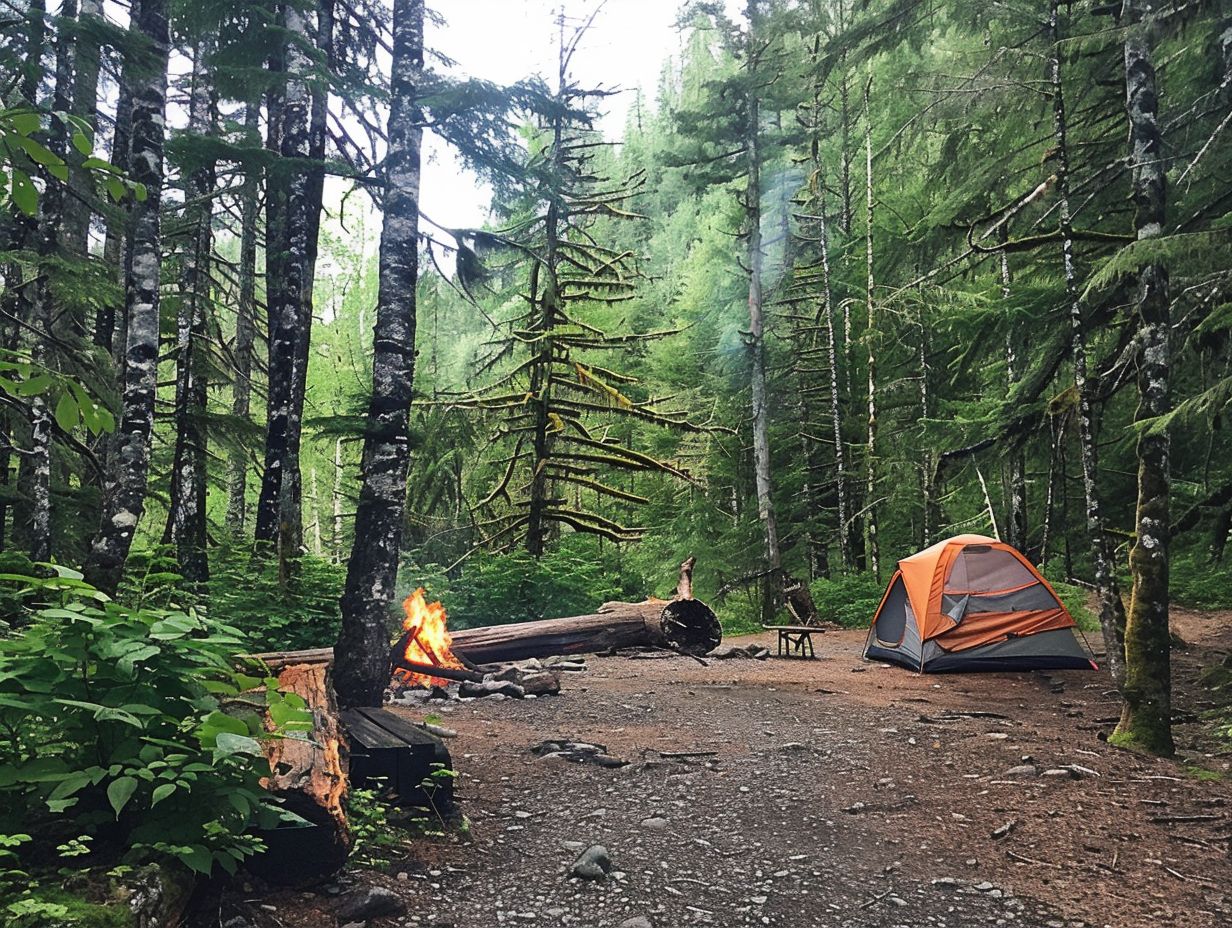
It is imperative to verify the availability of campsites and make reservations in a timely manner, particularly for popular developed campsites, in order to facilitate a seamless and enjoyable camping experience.
Meticulous planning of a camping trip well in advance can significantly enhance the overall quality of the outing. An efficient method of securing a pitch is to peruse the official websites of national parks or forest services, as they frequently provide up-to-date availability statuses and online booking functionalities.
Furthermore, contacting ranger stations directly can prove beneficial, as they have valuable insights regarding campsite conditions and availability. Due to the high demand for developed campsites, early preparation is essential for securing preferred dates and ensuring a peaceful camping adventure.
3. Obtain Necessary Permits and Passes
Securing the necessary permits and passes is an essential component in the strategic planning of a camping excursion to national forests, thereby ensuring adherence to the regulations stipulated by the USDA Forest Service.
These permits function as a fundamental mechanism for managing the impact of visitors on the delicate ecosystems situated within the forests. Diverse categories of permits exist, including wilderness permits designed for backcountry camping and special use permits designated for group camping or organised events.
Such permits play a pivotal role in enabling the USDA Forest Service to effectively control activities within the forests, thereby safeguarding wildlife, mitigating overcrowding, and preserving the pristine natural aesthetics of the forested areas.
Individuals seeking to procure these permits can typically initiate the application process online via the Forest Service’s official website or opt for in-person assistance at local ranger stations.
4. Plan Your Route and Transportation
Careful planning of the route and transportation logistics, which includes navigating forest access roads, is imperative for a successful and pleasant camping expedition in national forests.
When devising your travel itinerary to the national forest, it is prudent to take into account the condition of the forest access roads. These pathways can range from well-maintained highways to rough dirt trails, underscoring the importance of selecting a route that aligns with the capabilities of your vehicle.
It is essential to ensure that your vehicle is equipped for off-road driving, with suitable tyres and adequate ground clearance. Ahead of embarking on your journey, it is advisable to verify the presence of any road closures or restrictions in the vicinity.
Emphasising safety, it is recommended to communicate your travel plans to others and to carry emergency provisions in the event of unforeseen circumstances.
What to Pack for Camping in National Forests?
It is imperative to equip oneself with the appropriate gear for a prosperous camping trip in national forests to ensure a comfortable and enjoyable experience. Resources such as The Dyrt PRO can help with efficient planning and packing for the trip.
1. Camping Gear
Essential camping essentials include a reliable camping stove, sufficient firewood, and additional necessary equipment to set up a comfortable and functional campsite.
When considering a camping stove, it is advisable to choose one that is portable, durable, and user-friendly. Prioritise models that offer adjustable heat settings and quick ignition features for added convenience.
Also, it is crucial to acquire a high-quality tent capable of withstanding various weather conditions. Make sure that your sleeping bag is suitable for the expected temperatures at your camping site to ensure a peaceful night’s sleep.
Adding a reliable torch, a comprehensive first aid kit, and effective insect repellent can improve the enjoyment and safety of your outdoor experience.
2. Food and Water
Ensuring the provision of adequate food and access to a clean water source is crucial for the successful execution of a camping trip, as it offers the necessary sustenance and hydration.
A valuable approach to food preservation during camping expeditions is the inclusion of non-perishable items in the provisions, such as tinned goods, dried fruits, nuts, and energy bars. These items possess an extended shelf life and are convenient for transportation.
In the meal planning process, it is advantageous to develop a comprehensive menu in advance to guarantee a diverse array of food options and an ample supply for each day of the excursion.
The availability of a dependable water source holds paramount importance, and possessing the knowledge of water purification techniques in wilderness settings can prove to be life-saving. Common methods for ensuring water safety for consumption include boiling, utilisation of water purification tablets, or the use of portable filters.
3. Clothing and Personal Items
It is crucial to pack appropriate clothing and personal items in order to ensure comfort and safety during a camping trip, thereby enabling individuals to fully appreciate nature while also prioritising protection.
When preparing for a camping expedition, it is advisable to include versatile clothing items in your packing list. This may include moisture-wicking base layers, insulating mid-layers such as fleece or down jackets, and waterproof outer layers to shield against unexpected precipitation.
Additionally, it is important to remember to bring along comfortable hiking boots or shoes suitable for walking on diverse terrains. Personal hygiene products, such as biodegradable soap, toothbrush, toothpaste, and hand sanitiser, are essential for maintaining cleanliness and freshness while outdoors.
Moreover, it is recommended to pack items such as a compact towel, sunscreen, insect repellent, and a first aid kit to be prepared for any potential emergencies that may arise during the camping trip.
4. First Aid Kit and Emergency Supplies
It is crucial to bring a well-equipped first aid kit and emergency supplies to ensure safety during your camping excursion, adequately preparing you for any unforeseen circumstances.
Included in these supplies should be an assortment of plasters for wound care, antiseptic solutions like alcohol wipes or hydrogen peroxide for wound cleansing, over-the-counter medications for common ailments such as painkillers and antihistamines, as well as essential tools like scissors, tweezers, and a thermometer. Additionally, it is imperative to pack emergency essentials like a torch, whistle, compass, and a multi-tool.
Before setting off on your camping trip, it is advisable to familiarise yourself with basic first aid procedures and establish a communication plan to be put into action in case of emergencies. While in the wild, prioritise safety measures such as staying well-hydrated, wearing appropriate clothing, and maintaining situational awareness at all times.
What Are the Rules and Regulations for Camping in National Forests?
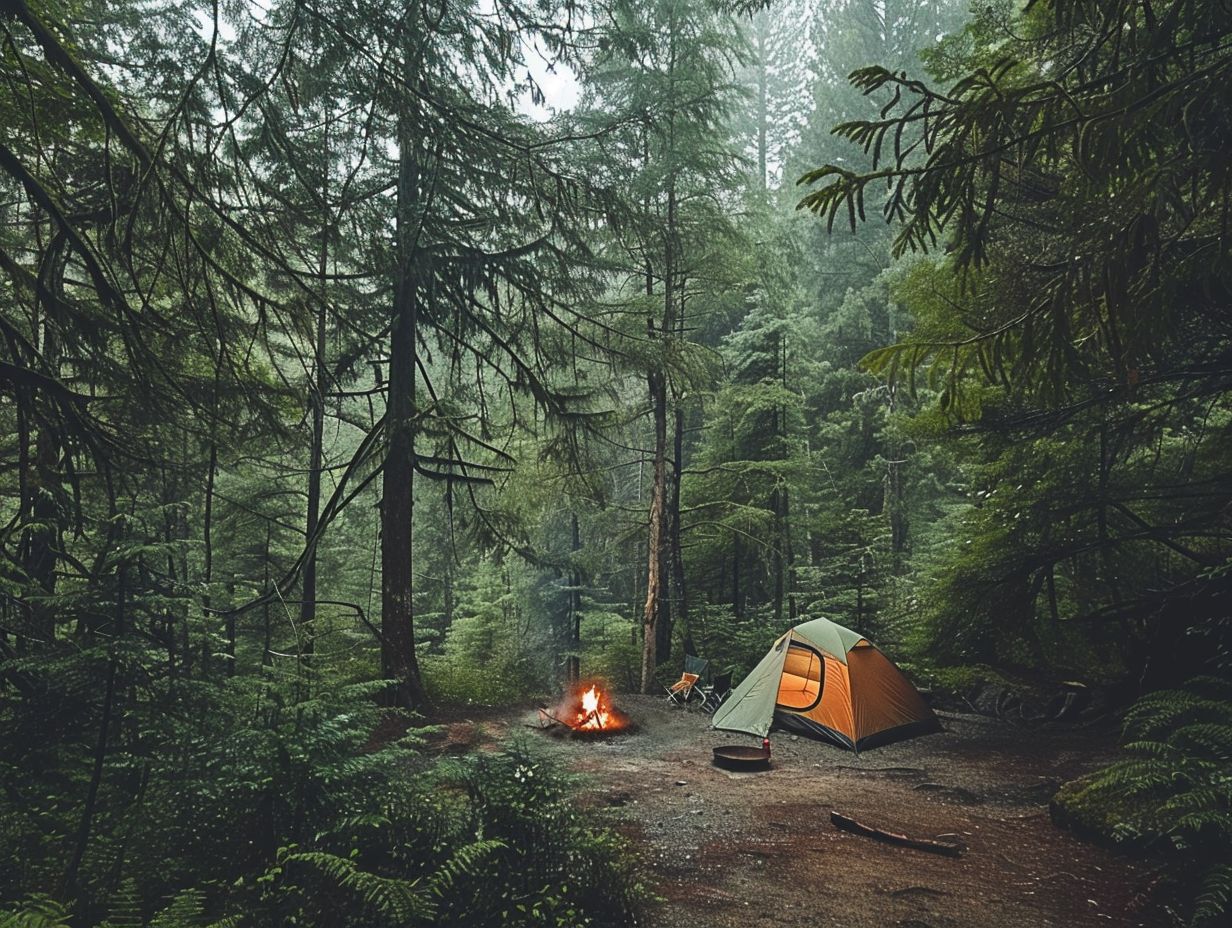
Understanding and adherence to the regulations governing camping in national forests are essential for conservation of these natural habitats and facilitation of a secure and pleasant experience. The US Department of Agriculture emphasises the importance of upholding Leave No Trace principles to preserve the unspoilt state of these ecosystems.
1. Leave No Trace Principles
Adherence to the Leave No Trace principles is imperative in minimising one’s impact on the environment and ensuring a pristine and sustainable ecosystem for future outdoor enthusiasts.
A foundational tenet of Leave No Trace involves meticulous planning and preparation, which entails packing essential items while refraining from overpacking to minimise waste generation. Observing proper waste disposal practices and removing all rubbish from the camping site are critical components of this principle.
It is advisable to utilise reusable containers for food and beverages and abstain from the use of single-use plastics. Demonstrating respect for wildlife involves maintaining a safe distance and refraining from feeding them to prevent reliance on human food sources.
By meticulously following these principles, individuals contribute to the preservation of the natural landscape, allowing others to relish its beauty in its unspoiled state.
2. Campsite Restrictions
Understanding campsite restrictions in national forests is essential for compliance with USDA Forest Service regulations and the preservation of these natural habitats. Camping pitches are clearly marked to ensure campers adhere to authorised locations, and restrictions on group size are enforced to maintain the ecological balance of the forest.
Compliance with regulations concerning campfires, including the requirement that they must be contained within designated fire rings or their prohibition during dry seasons, is strictly enforced by the USDA Forest Service. These measures are in place to protect the beauty and natural resources of national forests for the enjoyment of both current and future generations.
3. Fire Safety Regulations
The adherence to fire safety regulations is of paramount importance in preventing wildfires and ensuring the well-being of all campers, particularly when utilising firewood or camping stoves.
When engaging in camping activities within national forests, strict compliance with specified guidelines is imperative to mitigate the potential for inadvertent fires. Many national forests impose restrictions on open fires, often mandating the utilisation of designated fire pits or rings.
The utilisation of locally sourced firewood is essential to curtail the dissemination of invasive species and diseases. Campers should acquaint themselves with the correct operation of camping stoves to avert any untoward incidents.
To bolster fire safety measures, it is advisable to maintain a bucket of water or a fire extinguisher in close proximity, abstain from leaving fires unattended, and ensure their complete extinguishment before vacating the campsite.
4. Wildlife Safety Guidelines
Adhering to wildlife safety guidelines is imperative to ensure the protection of both campers and the diverse species inhabiting national forests, which includes responsible management of pets.
When engaging with wildlife, maintaining a safe distance is essential to avoid disrupting their natural behaviours. Feeding wild animals should be strictly avoided as it can lead to dependency and negatively impact their diet. Properly storing and securing food items is crucial to prevent wildlife from being attracted to the campsite.
Respecting wildlife habitats involves staying on designated trails, refraining from creating loud noises that may startle animals, and avoiding littering. By implementing these measures, individuals can appreciate nature while mitigating risks to both themselves and the wildlife in the surrounding environment.
What Are Some Popular National Forests for Camping?
Examining a selection of the nation’s most renowned national forests for camping can help individuals discover exceptional campsites and create unforgettable experiences. Authoritative resources such as ‘Camping with Suzi’ written by Fred and Suzi Dow provide extensive guidance on these popular destinations.
1. Yosemite National Forest
Yosemite National Forest provides a diverse array of camping options, ranging from developed campgrounds to more primitive sites, all encompassed by the breathtaking backdrop of its iconic natural landscapes.
For individuals in search of a conventional camping experience, Yosemite offers numerous developed campgrounds that come equipped with facilities like toilets, picnic tables, and fire pits. These sites cater to families or beginner campers seeking the comforts of home during their outdoor stay.
Conversely, enthusiasts of adventure can choose the secluded primitive campsites scattered throughout the forest, offering a genuine immersion into the wilderness. Enhanced by towering granite cliffs, cascading waterfalls, and abundant wildlife, Yosemite’s natural features establish a magnificent setting for campers to engage in various activities such as hiking, rock climbing, fishing, and stargazing.
2. Great Smoky Mountains National Forest
The Great Smoky Mountains National Forest is well-known for its extensive biodiversity and verdant wilderness, rendering it an optimal location for camping and experiencing the natural splendour of the eastern United States.
Engaging in a visit to this location allows individuals to be fully immersed within a diverse ecosystem that encompasses more than 19,000 species of plants and animals.
Accommodation options cater to various preferences, ranging from backcountry campsites that provide a rugged experience to developed campgrounds that offer amenities such as toilets and picnic areas.
Enthusiasts of hiking can indulge in over 800 miles of trails, which includes the renowned Appalachian Trail. Those in pursuit of breathtaking vistas can delight in the panoramic scenery offered by Clingmans Dome from its observation tower.
The wildlife watching experience is equally captivating, providing ample opportunities to observe black bears, elk, and a myriad of bird species within their natural habitat.
3. Arapaho and Roosevelt National Forests
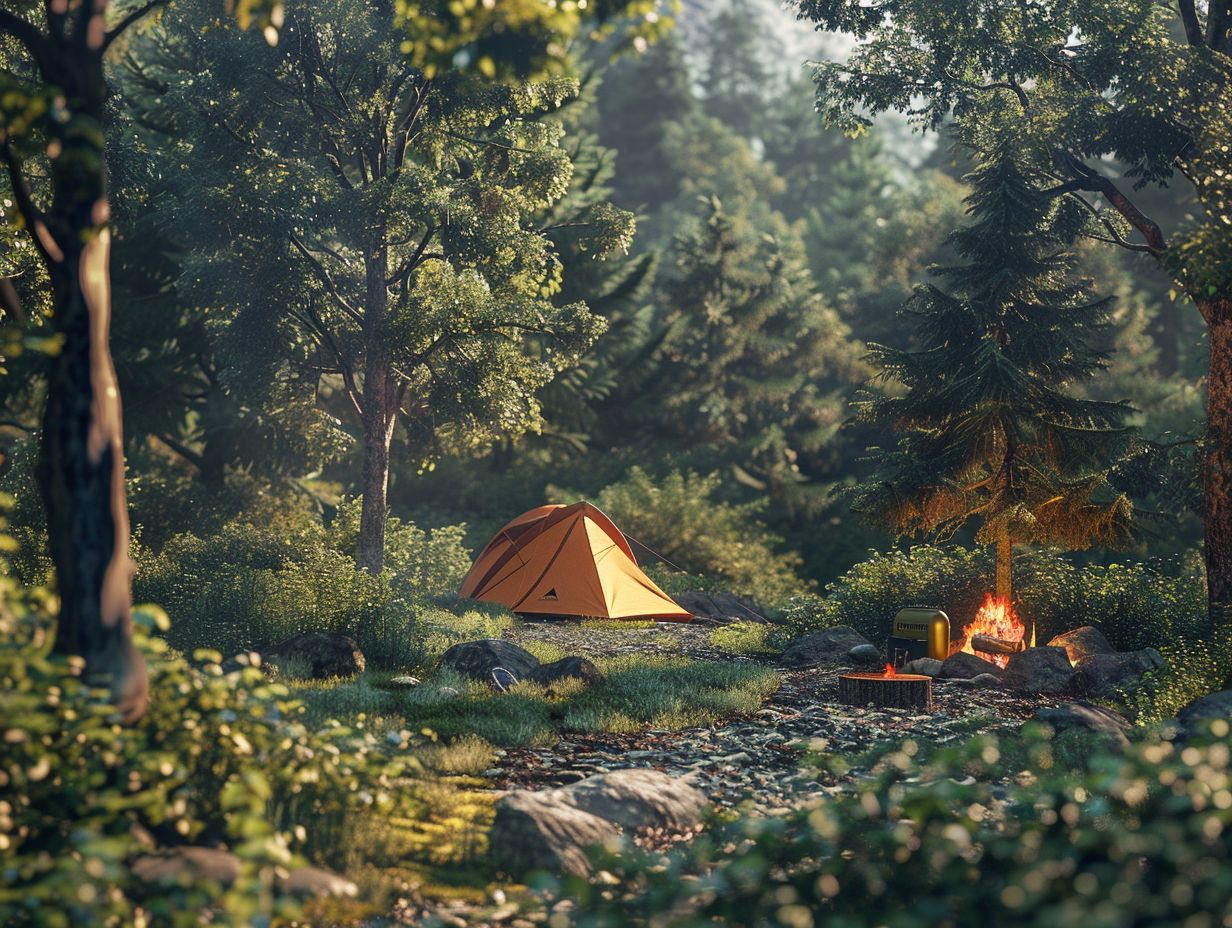
The Arapaho and Roosevelt National Forests present a range of camping facilities that cater to various camping preferences, encompassed by the captivating forested landscapes of Colorado.
These national forests serve as a sanctuary for outdoor enthusiasts, offering designated campsites suitable for RVs and trailers, alongside more secluded pitches ideal for tent camping. The diverse terrains within the forests create opportunities for activities such as hiking, fishing, rock climbing, and wildlife observation.
Explorers can traverse scenic trails like the Continental Divide Trail or Cascade Creek Trail while revelling in the picturesque vistas of alpine lakes, verdant meadows, and towering peaks. Encompassing over 1.5 million acres, the Arapaho and Roosevelt National Forests truly serve as a haven for those in pursuit of outdoor escapades.
4. Olympic National Forest
The Olympic National Forest stands out as a prominent destination in the Pacific Northwest, providing a range of camping experiences that span from coastal environments to verdant rainforests, allowing visitors to immerse themselves fully in the natural world.
The coastal camping locations within the Olympic National Forest present awe-inspiring vistas of the rugged shoreline, enabling campers to drift off to sleep to the melodic sounds of crashing waves. In contrast, the camping areas nestled within the rainforest envelop guests in a serene setting marked by towering trees, lush moss-covered grounds, and a symphony of avian melodies.
Catering to a diverse range of nature enthusiasts, the Olympic National Forest accommodates those seeking beachside relaxation as well as those craving forest exploration. With an array of hiking trails, wildlife observation opportunities, and chances for stargazing, the forest serves as a sanctuary for outdoor enthusiasts in search of peace within breathtaking natural landscapes.
Frequently Asked Questions
Do I need a permit to camp in a National Forest?
Yes, you will need a permit to camp in a National Forest. You can obtain a permit by visiting the forest’s official website or by contacting the forest ranger station.
What should I bring with me for camping in a National Forest?
Some essential items to bring for camping in a National Forest include a tent, sleeping bag, cooking supplies, food, water, first aid kit, and appropriate clothing for the weather. It is also crucial to check for any additional items required by the specific forest you plan to visit.
Can I have a campfire in a National Forest?
While campfires are allowed in most National Forests, it is essential to check for any fire restrictions in place before starting a fire. You should also make sure to follow proper campfire safety practices and always fully extinguish the fire before leaving.
Are there any rules or regulations I need to follow while camping in a National Forest?
Yes, there are rules and regulations that must be followed while camping in a National Forest. These may include restrictions on campfires, noise levels, and camping locations. It is crucial to familiarise yourself with these rules to ensure a safe and enjoyable camping experience.
Can I bring my pet with me when camping in a National Forest?
Most National Forests allow pets, but it is essential to check for any specific rules or restrictions, such as leash requirements. It is also crucial to be a responsible pet owner and clean up after your pet to maintain the cleanliness and safety of the forest.
Share:
By submitting your email address, you are agreeing to receive marketing emails from theexpertcamper.co.uk.
We’ll never share your email address and you can unsubscribe at any time. Privacy policy
Related Posts
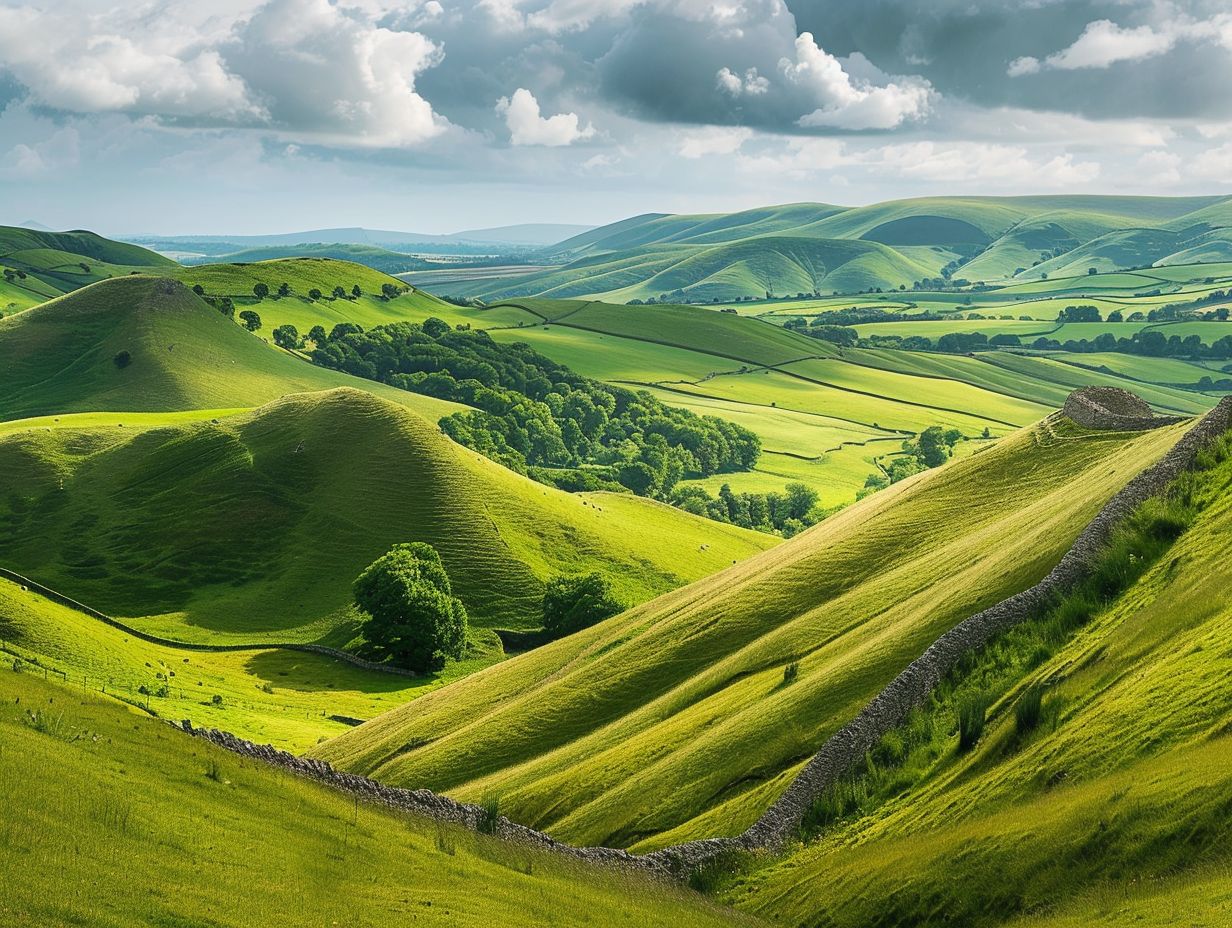
A Seasonal Guide To Hiking In The Peak District
Are you ready to lace up your hiking boots and explore the stunning landscapes of the Peak District? This seasonal guide will take you through

Hiking Challenges Preparing For Your First Ultrahike
Are you ready to take your hiking adventures to the next level? Ultra-hiking offers a unique combination of physical and mental challenges, breathtaking scenery, and
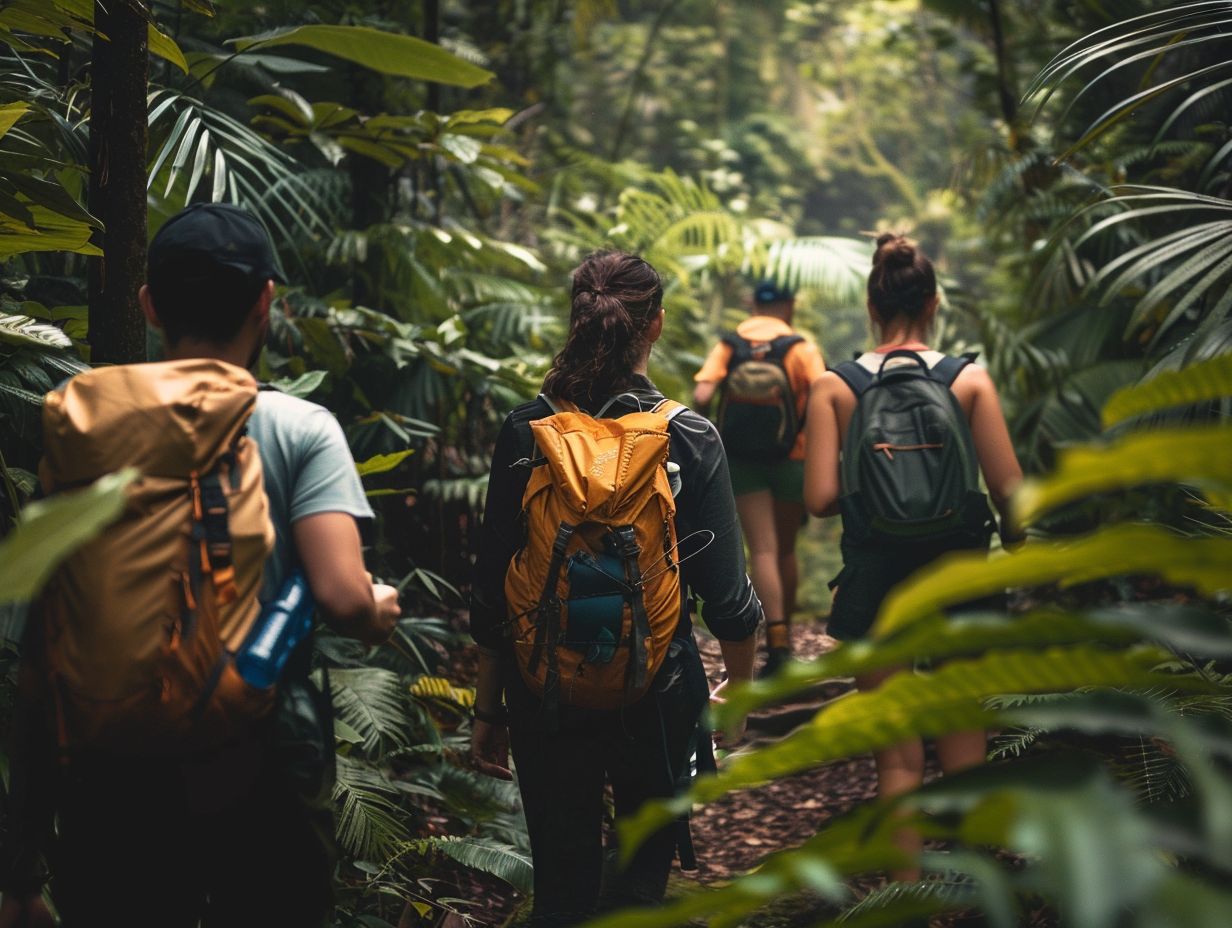
Ecofriendly Hiking Tips For Sustainable Adventures
Are you an outdoor enthusiast looking to minimise your impact on the environment while enjoying the great outdoors? Eco-friendly hiking is the perfect solution! We
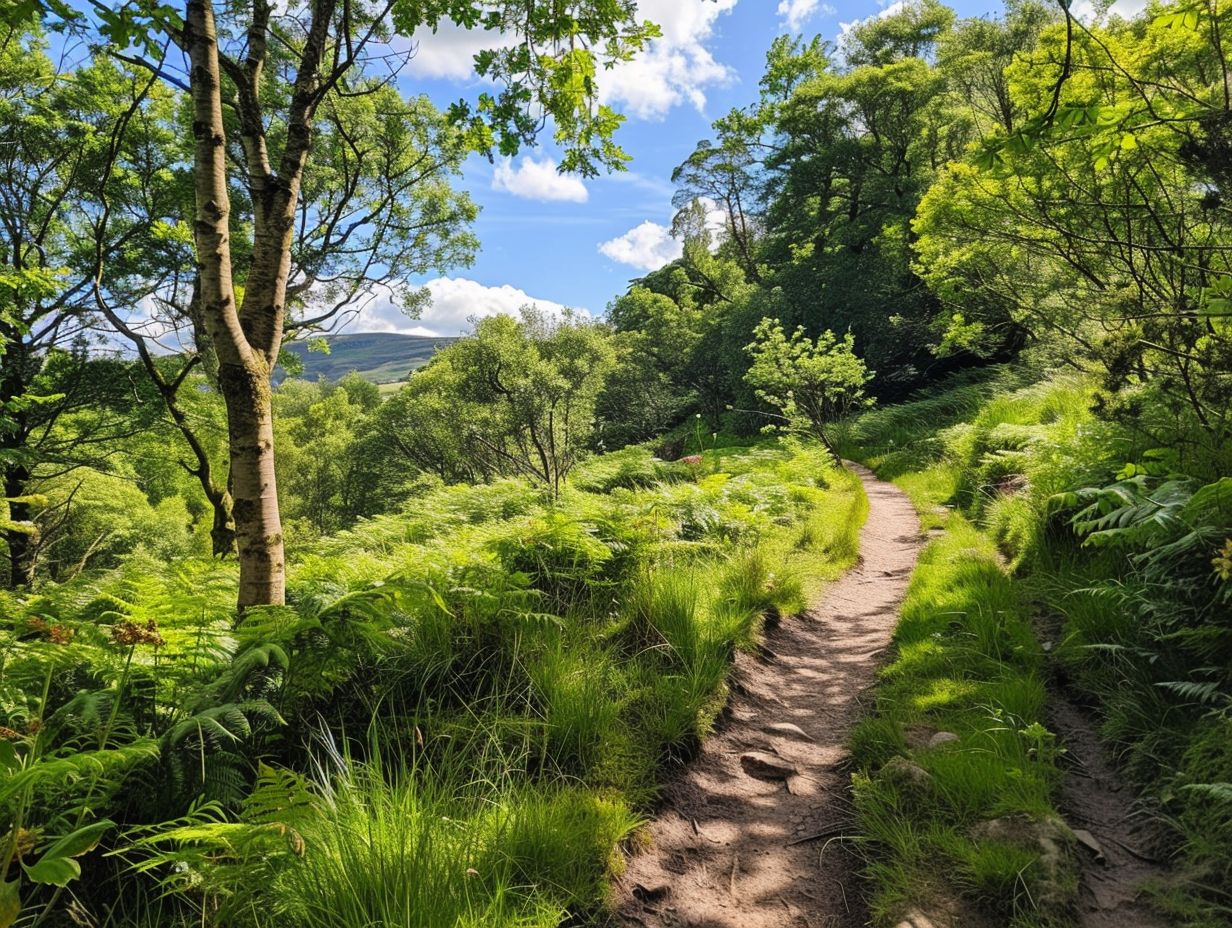
The Best Hiking Trails For Experiencing UK Wildlife
When exploring the picturesque hiking trails of the UK, you can expect to encounter a diverse array of wildlife. From majestic birds soaring overhead to
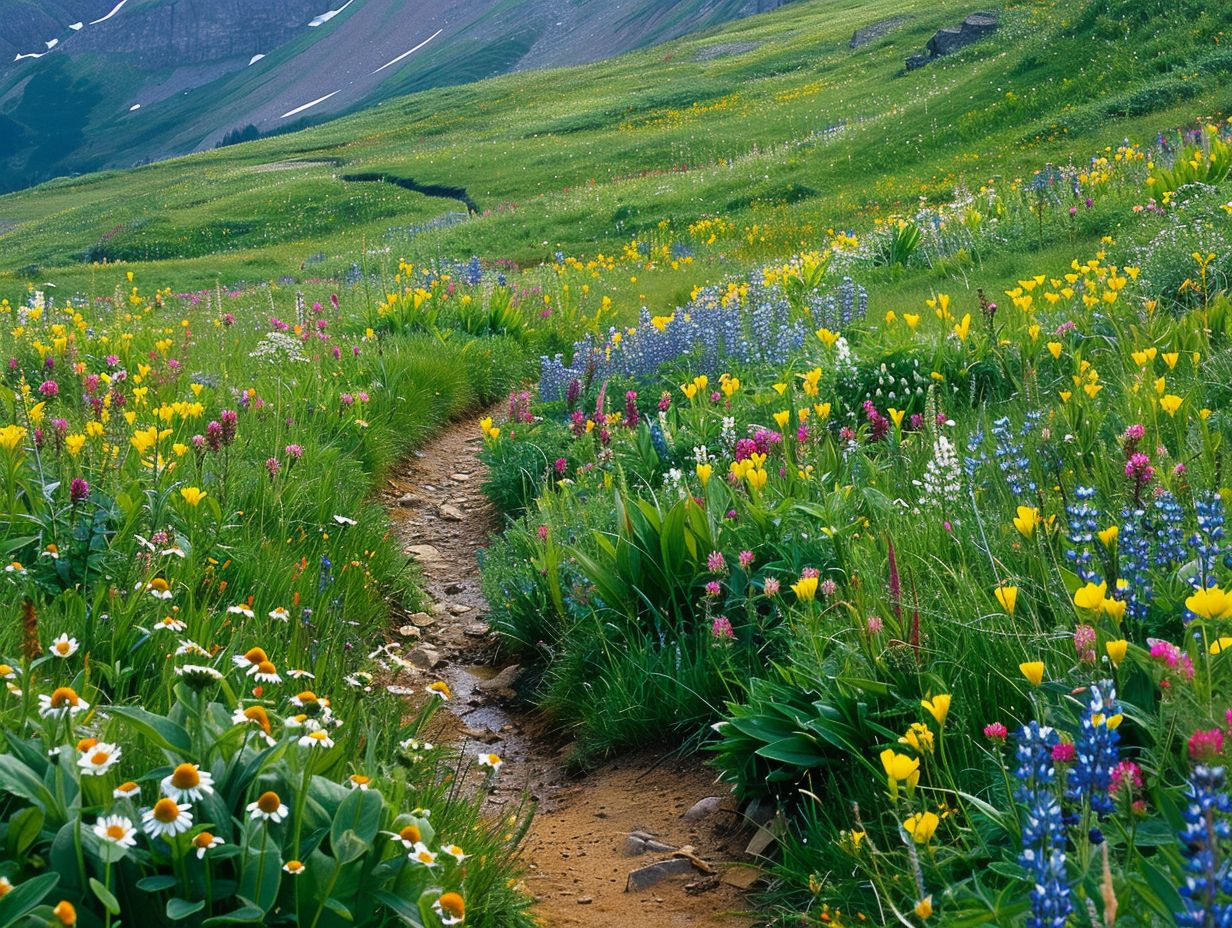
Wildflower Walks The Best Trails For Nature Lovers
Are you a nature lover looking to embark on a wildflower walk? Explore the best trails for wildflower walks, including [Trail Name 1], [Trail Name


